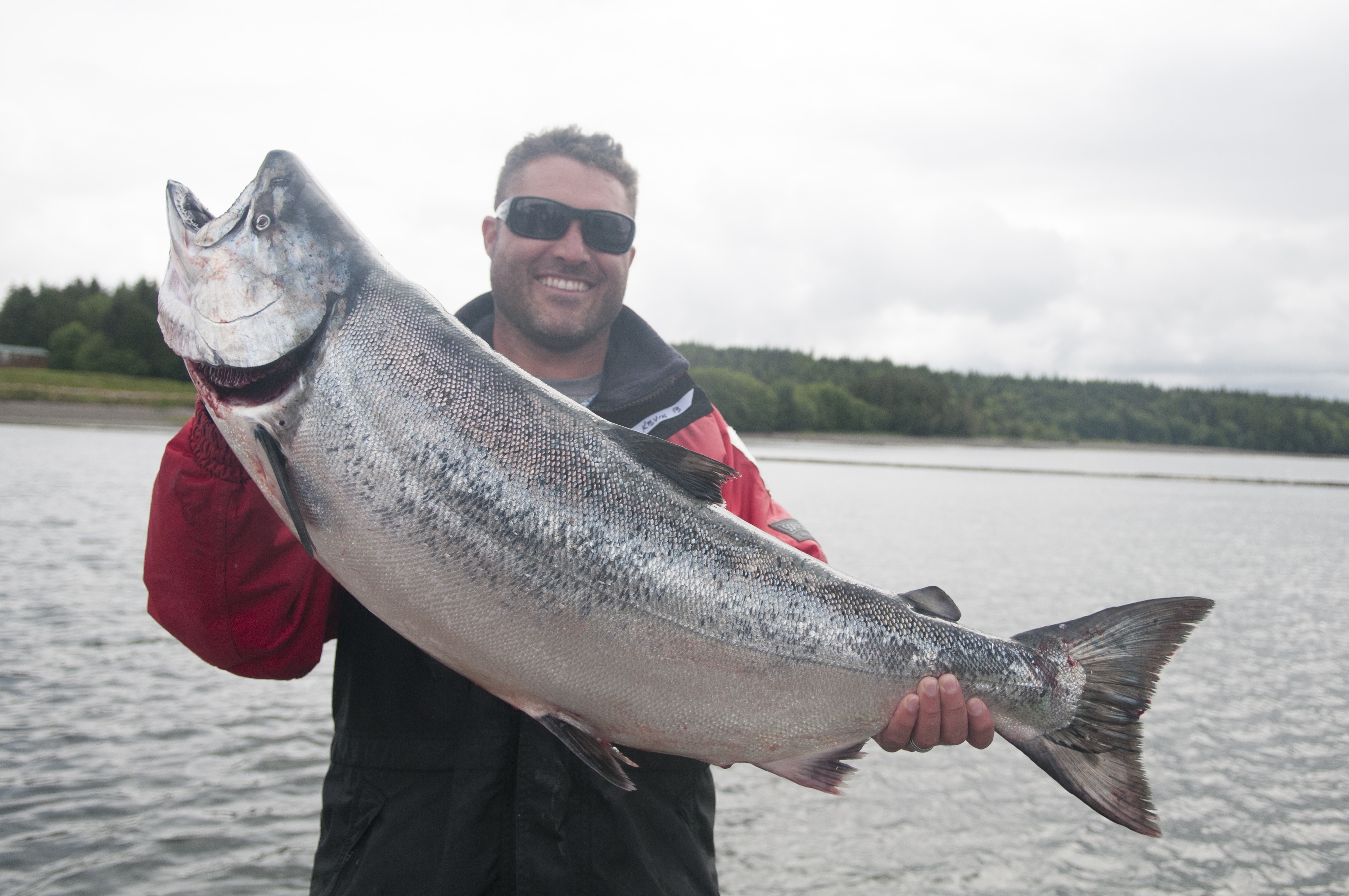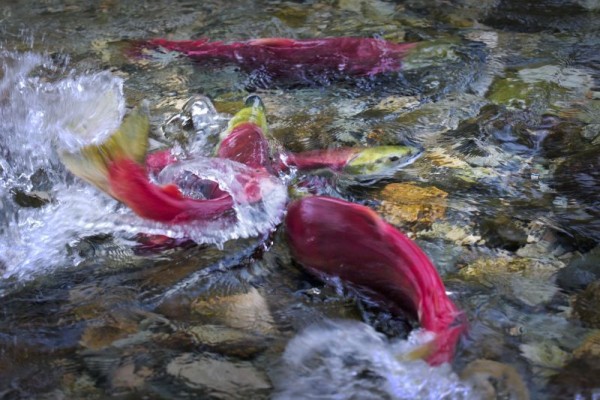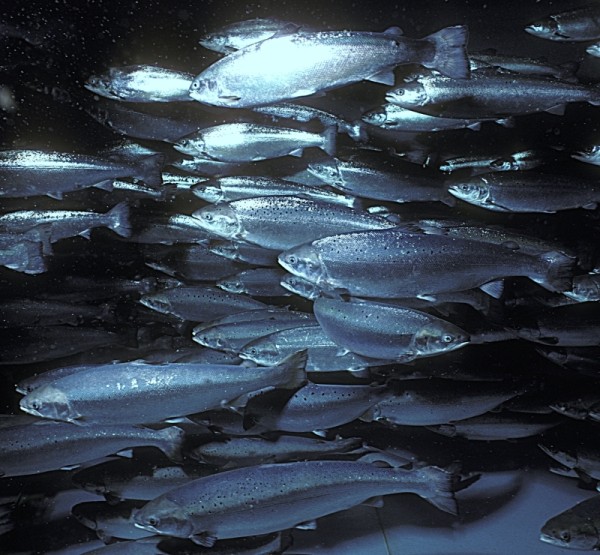It’s Canada Water Week and we’re celebrating our Water Heroes and our Water Hero Species. Time to test your knowledge about one of Canada’s iconic fish: the salmon.
When it comes to water, salmon are in a class by themselves because they can live in both freshwater and saltwater. Do they then live in salt water? Let’s look more closely at the salmon life cycle to find out.
Anadromous Salmon – The Best of Both Worlds
Salmon are anadromous fish, meaning they live part of their lives in fresh water and part in saltwater. Here is the typical salmon life cycle
-
Salmon eggs hatch in freshwater streams and rivers The juveniles will live there for weeks to years depending on species.
-
Eventually instinct drives salmon to swim downstream towards the ocean Along the way, their bodies undergo physical changes to prepare for saltwater
-
Salmon spend one to five years maturing in the ocean where food is plentiful. Here they become strong, fast swimmers and reach full adult size.
-
When it’s time to spawn, salmon use their strong sense of smell to find their way back to the freshwater streams where they were born, which could be hundreds or even thousands of miles away.
-
After spawning, salmon quickly deteriorate and die, providing a nutrient boost to the stream ecosystem.
So salmon transition between fresh and saltwater habitats at different stages of life. This gives them the best of both worlds – the rich food sources of the ocean and freshwater breeding grounds.
The Challenges of Transitioning Environments
Shifting between such different saline environments is an exceptional physiological feat. Most fish are specialized for either fresh or saltwater. If freshwater fish enter saltwater, water will rush into their bodies, stretching cells until they burst. The opposite happens to saltwater fish in freshwater.
Salmon, however, have adaptations that enable them to transition between fresh and saltwater:
-
Molecular pumps in the gills and intestines that actively transport salts in or out of the body.
-
Hormonal changes during migration that assist osmoregulation.
-
Adjustments to the permeability of gill membranes.
So Are Salmon Saltwater or Freshwater Fish?
Given their ability to thrive in both habitats, classifying salmon as strictly freshwater or saltwater fish is problematic. Perhaps the best solution is to identify them based on their current life stage:
-
Salmon eggs and juveniles rearing in rivers and streams are freshwater salmon. At this stage, they cannot survive in saltwater.
-
After smolting and migrating to the ocean, they become saltwater salmon, feeding and growing to adulthood. Their bodies are now adapted to marine life.
-
Upon returning to freshwater to spawn, saltwater salmon undergo physical changes to become freshwater salmon once again.
When Salmon Don’t Reach the Ocean
Under natural conditions, virtually all salmon migrate to the ocean. But sometimes circumstances prevent access to saltwater:
-
Natural barriers like waterfalls may block upstream migration. Salmon above the barrier remain landlocked.
-
Dams built by humans also impede salmon from reaching the ocean. Some hatchery programs now truck salmon around dams.
-
Landlocked salmon complete their lifecycle entirely in freshwater lakes and rivers. They never experience the ocean’s abundant food resources.
-
Landlocked populations often evolve distinct names like kokanee (from sockeye) and landlocked Atlantic salmon. But they remain the same species as their anadromous counterparts.
-
Given access, landlocked salmon would still migrate to the ocean and thrive there. Their anadromous instincts remain despite generations in freshwater.
So while most salmon are highly adapted to life at sea, some populations complete their entire lifecycle in freshwater. Yet they retain the urge to make their epic migrations to the ocean.
In conclusion, salmon are amazing fish uniquely adapted to transition between freshwater and marine habitats. This anadromous life history gives salmon access to the rich ocean food web yet provides suitable freshwater breeding sites. Defining salmon as either a freshwater or saltwater fish fails to capture the diversity of their habitats and life stages. Perhaps salmon’s ability to exploit both worlds helps explain why they remain a wild success story across the northern latitudes.

Salmon have huge cultural significance

For example, in the Pacific Northwest, salmon have been a significant part of the First Nation economies, religions, and cultures of the region for millennia. Historically and today, salmon have been a primary food source for Columbia River Basin First Nations, and are a significant part of their cultural and spiritual identity.
Salmon are considered keystone species

This means they have a disproportionately large impact on their ecosystem relative to how many of them there are. If a keystone species were to disappear, their ecosystems would change significantly. Rotting salmon carcasses transfer valuable nutrients from the ocean to the land. Scientists have traced nutrients from salmon bodies and found them in mosses, herbs, shrubs, trees, insects, song birds, bears and wolves!
The Salmon’s Life Mission | Destination WILD
FAQ
Is salmon saltwater or freshwater?
Is farmed salmon fresh or salt water?
Is salmon a salty fish?
How do salmon go from freshwater to saltwater?
Are freshwater and saltwater salmon the same?
Although freshwater and saltwater salmon are the same species, they may display different behaviors depending on their environment. For example, landlocked freshwater salmon will make their way from the freshwater river or stream where they’re born to the deeper waters of a lake.
Is farmed salmon as nutritious as wild salmon?
Scientific evidence suggests that farmed salmon may be larger than wild salmon and have a higher omega-3 content. However, it may also be more likely to contain contaminants.
Do salmon live in salt water or freshwater?
1. Like WWF-Canada, salmon love both salt water and freshwater Salmon are considered “ anadromous ” which means they live in both fresh and salt water. They are born in freshwater where they spend a few months to a few years (depending on the species) before moving out to the ocean. When it’s time to spawn, they head back to freshwater.
Where do salmon come from?
Salmon are central spiritually and culturally to Native American mythology on the Pacific coast, from the Haida and Coast Salish peoples, to the Nuu-chah-nulth peoples in British Columbia. ^ Open-net fish farms are large anchored floating net cages often located in bays and relatively sheltered areas.
